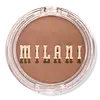What's inside
What's inside
 Key Ingredients
Key Ingredients

 Benefits
Benefits

 Concerns
Concerns

 Ingredients Side-by-side
Ingredients Side-by-side

Dimethicone
EmollientPhenyl Trimethicone
Skin ConditioningSilica
AbrasiveBis-Diglyceryl Polyacyladipate-2
EmollientIsononyl Isononanoate
EmollientMica
Cosmetic ColorantCalcium Sodium Borosilicate
Microcrystalline Wax
Emulsion StabilisingSynthetic Wax
AbrasiveCaprylic/Capric Triglyceride
MaskingSynthetic Fluorphlogopite
Octyldodecanol
EmollientSorbitan Olivate
EmulsifyingCitrullus Lanatus Seed Oil
EmollientRosa Damascena Flower Oil
MaskingTocopheryl Acetate
AntioxidantPunica Granatum Seed Oil
EmollientStearalkonium Hectorite
Gel FormingPropylene Carbonate
SolventPolyglyceryl-6 Polyricinoleate
EmulsifyingCetyl PEG/PPG-10/1 Dimethicone
EmulsifyingPentaerythrityl Tetra-Di-T-Butyl Hydroxyhydrocinnamate
AntioxidantSorbitan Isostearate
Emulsifying1,2-Hexanediol
Skin ConditioningDisteardimonium Hectorite
StabilisingCaprylyl Glycol
EmollientEthylhexylglycerin
Skin ConditioningTriethoxycaprylylsilane
Aluminum Hydroxide
EmollientCI 77891
Cosmetic ColorantCI 77492
Cosmetic ColorantCI 77491
Cosmetic ColorantCI 77499
Cosmetic ColorantDimethicone, Phenyl Trimethicone, Silica, Bis-Diglyceryl Polyacyladipate-2, Isononyl Isononanoate, Mica, Calcium Sodium Borosilicate, Microcrystalline Wax, Synthetic Wax, Caprylic/Capric Triglyceride, Synthetic Fluorphlogopite, Octyldodecanol, Sorbitan Olivate, Citrullus Lanatus Seed Oil, Rosa Damascena Flower Oil, Tocopheryl Acetate, Punica Granatum Seed Oil, Stearalkonium Hectorite, Propylene Carbonate, Polyglyceryl-6 Polyricinoleate, Cetyl PEG/PPG-10/1 Dimethicone, Pentaerythrityl Tetra-Di-T-Butyl Hydroxyhydrocinnamate, Sorbitan Isostearate, 1,2-Hexanediol, Disteardimonium Hectorite, Caprylyl Glycol, Ethylhexylglycerin, Triethoxycaprylylsilane, Aluminum Hydroxide, CI 77891, CI 77492, CI 77491, CI 77499
Octyldodecanol
EmollientIsononyl Isononanoate
EmollientCaprylic/Capric Triglyceride
MaskingSynthetic Fluorphlogopite
Pentaerythrityl Tetraisostearate
EmollientDicalcium Phosphate
AbrasiveSynthetic Wax
AbrasivePolyethylene
AbrasiveBis-Diglyceryl Polyacyladipate-2
EmollientSilica Silylate
EmollientNylon-12
Mica
Cosmetic ColorantCandelilla Cera
EmollientDisteardimonium Hectorite
StabilisingTocopheryl Acetate
AntioxidantPentaerythrityl Tetra-Di-T-Butyl Hydroxyhydrocinnamate
AntioxidantTalc
AbrasiveBHT
AntioxidantIron Oxides
CI 42090
Cosmetic ColorantCI 77891
Cosmetic ColorantOctyldodecanol, Isononyl Isononanoate, Caprylic/Capric Triglyceride, Synthetic Fluorphlogopite, Pentaerythrityl Tetraisostearate, Dicalcium Phosphate, Synthetic Wax, Polyethylene, Bis-Diglyceryl Polyacyladipate-2, Silica Silylate, Nylon-12, Mica, Candelilla Cera, Disteardimonium Hectorite, Tocopheryl Acetate, Pentaerythrityl Tetra-Di-T-Butyl Hydroxyhydrocinnamate, Talc, BHT, Iron Oxides, CI 42090, CI 77891
Ingredients Explained
These ingredients are found in both products.
Ingredients higher up in an ingredient list are typically present in a larger amount.
This ingredient is lipid-based synthetic skin-conditioning agent derived from adipic acid and a mixture of fatty acids. It is often called a lanolin substitute.
As an emollient, it helps soften and hydrate the skin. Emollients create a barrier on the skin to trap moisture in.
Due to its fatty acid base, it may not be Malassezia folliculitis safe.
Learn more about Bis-Diglyceryl Polyacyladipate-2This ingredient is an emollient, solvent, and texture enhancer. It is considered a skin-softener by helping the skin prevent moisture loss.
It helps thicken a product's formula and makes it easier to spread by dissolving clumping compounds.
Caprylic Triglyceride is made by combining glycerin with coconut oil, forming a clear liquid.
While there is an assumption Caprylic Triglyceride can clog pores due to it being derived from coconut oil, there is no research supporting this.
Learn more about Caprylic/Capric TriglycerideCi 77891 is a white pigment from Titanium dioxide. It is naturally found in minerals such as rutile and ilmenite.
It's main function is to add a white color to cosmetics. It can also be mixed with other colors to create different shades.
Ci 77891 is commonly found in sunscreens due to its ability to block UV rays.
Learn more about CI 77891Disteardimonium Hectorite comes from the clay mineral named hectorite. It is used to add thickness to a product.
It can also help stabilize a product by helping to disperse other ingredients.
Hectorite is a rare, white clay mineral.
Learn more about Disteardimonium HectoriteIsononyl Isononanoate is a synthetic skin-conditioner and texture enhancer. It is created from nonanoic acid, a fatty acid found in cocoa and lavender oil.
As an emollient, Isononyl Isononanoate helps keep your skin soft and smooth. This is because emollients create a barrier on the skin to trap moisture in.
Isononyl Isononanoate helps give products a velvet feel and improves spreadability.
Learn more about Isononyl IsononanoateMica is a naturally occurring mineral used to add shimmer and color in cosmetics. It can also help improve the texture of a product or give it an opaque, white/silver color.
Serecite is the name for very fine but ragged grains of mica.
This ingredient is often coated with metal oxides like titanium dioxide. Trace amounts of heavy metals may be found in mica, but these metals are not harmful in our personal products.
Mica has been used since prehistoric times throughout the world. Ancient Egyptian, Indian, Greek, Roman, Aztec, and Chinese civilizations have used mica.
Learn more about MicaOctyldodecanol is a fatty alcohol. It is primarily used to enhance the texture of products.
As an emulsifier, Octyldodecanol helps prevent the oils and waters from separating. It also prevents ingredients from creating foam when shaken.
Octyldodecanol is created by reducing fatty acid to an alcohol.
Due to its high molecular weight, it does not get absorbed into the skin.
Learn more about OctyldodecanolPentaerythrityl Tetra-Di-T-Butyl Hydroxyhydrocinnamate (long name, huh?) is a synthetic antioxidant.
It is used to help stabilize other antioxidants or prevent the color from changing in a product.
As an antioxidant, it helps fight free-radical molecules. Free-radical molecules are capable of damaging our cells and other genetic material. Thus, antioxidants may reduce the signs of aging.
This ingredient is oil-soluble.
Learn more about Pentaerythrityl Tetra-Di-T-Butyl HydroxyhydrocinnamateSynthetic Fluorphlogopite is the synthethic version of mica. It consists of fluorine, aluminum and silicate.
Synthetic Fluorphlogopite is used to add volume to products.
It is considered non-irritating on the skin.
Learn more about Synthetic FluorphlogopiteSynthetic Wax is created from fossil fuels such as natural gas. It is used to enhance texture, adjust pH, and as an occlusive.
It may also be used as an abrasive ingredient to exfoliate the skin.
Synthetic Wax may not be fungal acne safe.
Learn more about Synthetic WaxTocopheryl Acetate is AKA Vitamin E. It is an antioxidant and protects your skin from free radicals. Free radicals damage the skin by breaking down collagen.
One study found using Tocopheryl Acetate with Vitamin C decreased the number of sunburned cells.
Tocopheryl Acetate is commonly found in both skincare and dietary supplements.
Learn more about Tocopheryl Acetate